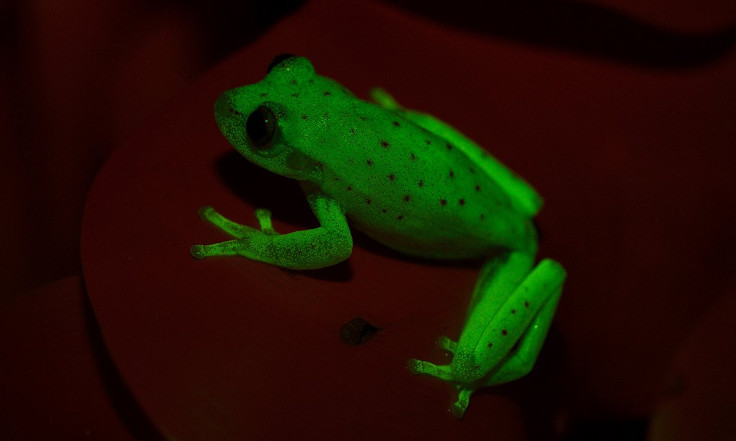World's first fluorescent frog glows bright green in the dark
The chemical origins of fluorescence are molecules known as hyloins.
The Polka-dot tree frog has been identified as the world's first fluorescent amphibian. A group of molecules known as hyloins appear to be responsible for this phenomenon.
Fluorescence occurs when a surface absorbs short-wavelength electromagnetic radiations and re-emits it as visible lights (longer wavelengths).
A number of species have been described before as exhibiting traces of fluorescence – especially underwater species such as fish, sharks and turtles. However, the phenomenon seems to be rare on land, restricted to a smaller number of animals such as parrots.
The study, now published in the journal PNAS, is the first to report on fluorescence in amphibians.
The Polka-dot tree frog appears brown with red dots under normal light, nothing too remarkable. However, the scientists decided to shine UV lights on the small amphibians, which they had collected on the outskirts of the city of Santa Fe (Argentina).

This made them glow a bright fluorescent blue-green. The frogs contrasted starkly with the plants on which they were standing.
Fluorescent compounds
The scientists then investigated what the cause of this fluorescence was. They identified that fluorescence was produced by a combination of lymph tissue and glandular secretions, with pigmentary cell filtering in the skin. The chemical origin of this fluorescence was traced to a class of fluorescent compounds known as hyolin molecules.
The researchers calculated that fluorescence contributed to 18−29% of the total light emitted by the frogs under twilight and at night.
They hypothesise that fluorescence enhances visual detection among frogs under conditions of moonlight or twilight, allowing them to spot each other.
However, more work is needed to fully understand the purpose of fluorescence. To pursue the investigations, other species of amphibians, with similar features as the polka-dot tree frog (such as a translucent skin) could also be tested for fluorescence.
© Copyright IBTimes 2025. All rights reserved.






















